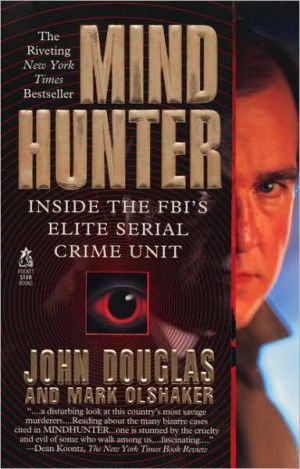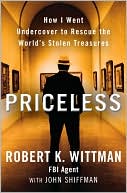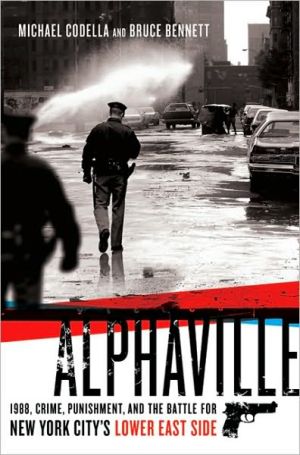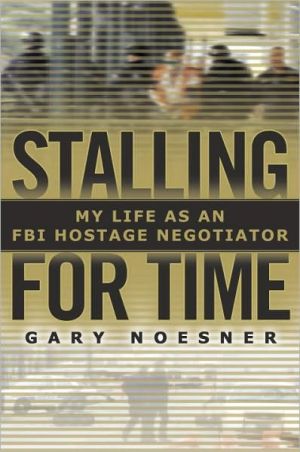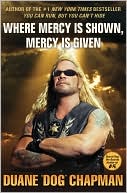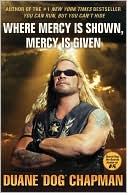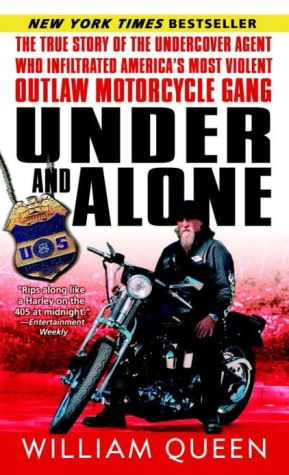Mindhunter: Inside the FBI's Elite Serial Crime Unit
During his twenty-five year career with the Investigative Support Unit, Special Agent John Douglas became a legendary figure in law enforcement, pursuing some of the most notorious and sadistic serial killers of our time: the man who hunted prostitutes for sport in the woods of Alaska, the Atlanta child murderer, and Seattle's Green River killer, the case that nearly cost Douglas his life.\ As the model for Jack Crawford in The Silence of the Lambs, Douglas has confronted, interviewed, and...
Search in google:
During his twenty-five-year career with the Investigative Support Unit, Special Agent John Douglas became a legendary figure in law enforcement, pursuing some of the most notorious and sadistic serial killers of our time: the man who hunted prostitutes for sport in the woods of Alaska, the Atlanta child murderer, and Seattle's Green River killer, the case that nearly cost Douglas his life. As the model for Jack Crawford in The Silence of the Lambs, Douglas has confronted, interviewed, adn studied scores of serial killers and assassins, including Charles Manson, Ted Bundy, and Ed Gein, who dressed himself in his victims' peeled skin. Now, in chilling detail, the legendary Mindhunter takes us behind the scenes of some of his most gruesome, fascinating, and challenging cases -- and into the darkest recesses of our worst nightmares. Publishers Weekly One of the first to develop the specialty of "criminal-personality profiling," Douglas has written a readable, popular version of his earlier Sexual Homicide (Lexington, 1988). He discusses how FBI profilers, working from crime scene evidence, predict the type of personality who committed a serial murder. Accurate profiles-such as that of Wayne Williams, the Atlanta child killer-can help focus on likely suspects. Profiling can also suggest proactive steps for luring the culprit into contacting the police. Unfortunately, a profile is apt to "fit a lot of people." As the unsolved Green River Killer case attests, it cannot substitute for hard evidence. Although profiling has limitations not emphasized in this semiautobiographical account, Douglas is justifiably proud of its success. Recommended for true crime collections. [Previewed in Prepub Alert, LJ 6/15/95.]-Gregor A. Preston, formerly with Univ. of California Lib., Davis
From Chapter 1: Inside the Mind of a Killer\ Behavior reflects personality. One of the reasons our work is even necessary has to do with the changing nature of violent crime itself. We all know about the drug-related murders that plague most of our cities and the gun crimes that have become an everyday occurrence as well as a national disgrace. Yet it used to be that most crime, particularly most violent crime, happened between people who in some way knew each other. We're not seeing that as much any longer. As recently as the 1960s, the solution rate to homicide in this country was well over 90 percent. We're not seeing that any longer, either. Now, despite impressive advances in science and technology, despite the advent of the computer age, despite many more police officers with far better and more sophisticated training and resources, the murder rate has been going up and the solution rate has been going down. More and more crimes are being committed by and against "strangers," and in many cases we have no motive to work with, at least no obvious or "logical" motive. Traditionally, most murders and violent crimes were relatively easy for law enforcement officials to comprehend. They resulted from critically exaggerated manifestations of feelings we all experience: anger, greed, jealousy, profit, revenge. Once this emotional problem was taken care of, the crime or crime spree would end. Someone would be dead, but that was that and the police generally knew who and what they were looking for. But a new type of violent criminal has surfaced in recent years— the serial offender, who often doesn't stop until he is caught or killed, who learns by experience and who tends to get better and better at what he does, constantly perfecting his scenario from one crime to the next. I say "surfaced" because, to some degree, he was probably with us all along, going back long before 1880s London and Jack the Ripper, generally considered the first modem serial killer. And I say "he" because, for reasons we'll get into a little later, virtually all real serial killers are male. Serial murder may, in fact, be a much older phenomenon than we realize. The stories and legends that have filtered down about witches and werewolves and vampires may have been a way of explaining outrages so hideous that no one in the small and close-knit towns of Europe and early America could comprehend the perversities we now take for granted. Monsters had to be supernatural creatures. They couldn't be just like us. Serial killers and rapists also tend to be the most bewildering, personally disturbing, and most difficult to catch of all violent criminals. This is, in part, because they tend to be motivated by far more complex factors than the basic ones I've just enumerated. This, in turn, makes their patterns more confusing and distances them from such other normal feelings as compassion, guilt, or remorse. Sometimes, the only way to catch them is to learn how to think like they do. Lest anyone think I will be giving away any closely guarded investigative secrets that could provide a "how-to', to would-be offenders, let me reassure you on that point right now. What I will be relating is how we developed the behavioral approach to criminal-personality profiling, crime analysis, and prosecutorial strategy, but I couldn't make this a how-to course even if I wanted to. For one thing, it takes as much as two years for us to train the already experienced, highly accomplished agents selected to come into my unit. For another, no matter how much the criminal thinks he knows, the more he does to try to evade detection or throw us off the track, the more behavioral clues he's going to give us to work with. As Sir Arthur Conan Doyle had Sherlock Holmes say many decades ago, "Singularity is almost invariably a clue. The more featureless and commonplace a crime is, the more difficult it is to bring it home." In other words, the more behavior we have, the more complete the profile and analysis we can give to the local police. The better the profile the local police have to work with, the more they can slice down the potential suspect population and concentrate on finding the real guy. Which brings me to the other disclaimer about our work. In the Investigative Support Unit, which is part of the FBI's National Center for the Analysis of Violent Crime at Quantico, we don't catch criminals. Let me repeat that: we do not catch criminals. Local police catch criminals, and considering the incredible pressures they're under, most of them do a pretty damn good job of it. What we try to do is assist local police in focusing their investigations, then suggest some proactive techniques that might help draw a criminal out. Once they catch him— and again, I emphasize they, not we— we will try to formulate a strategy to help the prosecutor bring out the defendant's true personality during the trial. We're able to do this because of our research and our specialized experience. While a local midwestern police department faced with a serial-murder investigation might be seeing these horrors for the first time, my unit has probably handled hundreds, if not thousands, of similar crimes. I always tell my agents, "If you want to understand the artist, you have to look at the painting." We've looked at many "paintings" over the years and talked extensively to the most "accomplished" "artists." We began methodically developing the work of the FBI's Behavioral Science Unit, and what later came to be the Investigative Support Unit, in the late 1970s and early 1980s. And though most of the books that dramatize and glorify what we do, such as Tom Harris's memorable The Silence of the Lambs are somewhat fanciful and prone to dramatic license, our antecedents actually do go back to crime fiction more than crime fact. C. August Dupin, the amateur detective hero of Edgar Allan Poe's 1841 classic "The Murders in the Rue Morgue," may have been history's first behavioral profiler. This story may also represent the first use of a proactive technique by the profiler to flush out an unknown subject and vindicate an innocent man imprisoned for the killings. Like the men and women in my unit a hundred and fifty years later, Poe understood the value of profiling when forensic evidence alone isn't enough to solve a particularly brutal and seemingly motiveless crime. "Deprived of ordinary resources," he wrote, "the analyst throws himself into the spirit of his opponent, identifies himself therewith, and not infrequently sees thus, at a glance, the sole methods by which he may seduce into error or hurry into miscalculation."
\ Publishers Weekly - Publisher's Weekly\ One of the first to develop the specialty of "criminal-personality profiling," Douglas has written a readable, popular version of his earlier Sexual Homicide (Lexington, 1988). He discusses how FBI profilers, working from crime scene evidence, predict the type of personality who committed a serial murder. Accurate profiles-such as that of Wayne Williams, the Atlanta child killer-can help focus on likely suspects. Profiling can also suggest proactive steps for luring the culprit into contacting the police. Unfortunately, a profile is apt to "fit a lot of people." As the unsolved Green River Killer case attests, it cannot substitute for hard evidence. Although profiling has limitations not emphasized in this semiautobiographical account, Douglas is justifiably proud of its success. Recommended for true crime collections. [Previewed in Prepub Alert, LJ 6/15/95.]-Gregor A. Preston, formerly with Univ. of California Lib., Davis\ \ \ \ \ Rima L. FirroneDouglas…is one heck of a storyteller. Mindhunter is the book that will make you lock up the house, take the phone off the hook and just keep reading. You won't be able to put it down.\ —Ocala (FL) Star—Banner\ \
